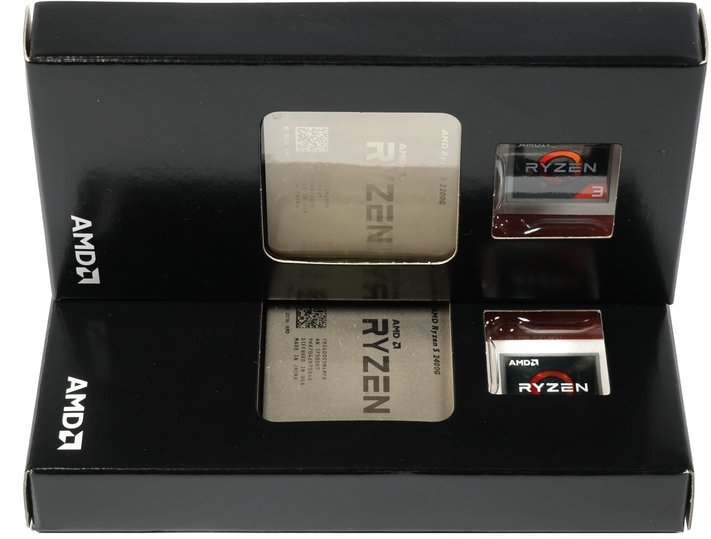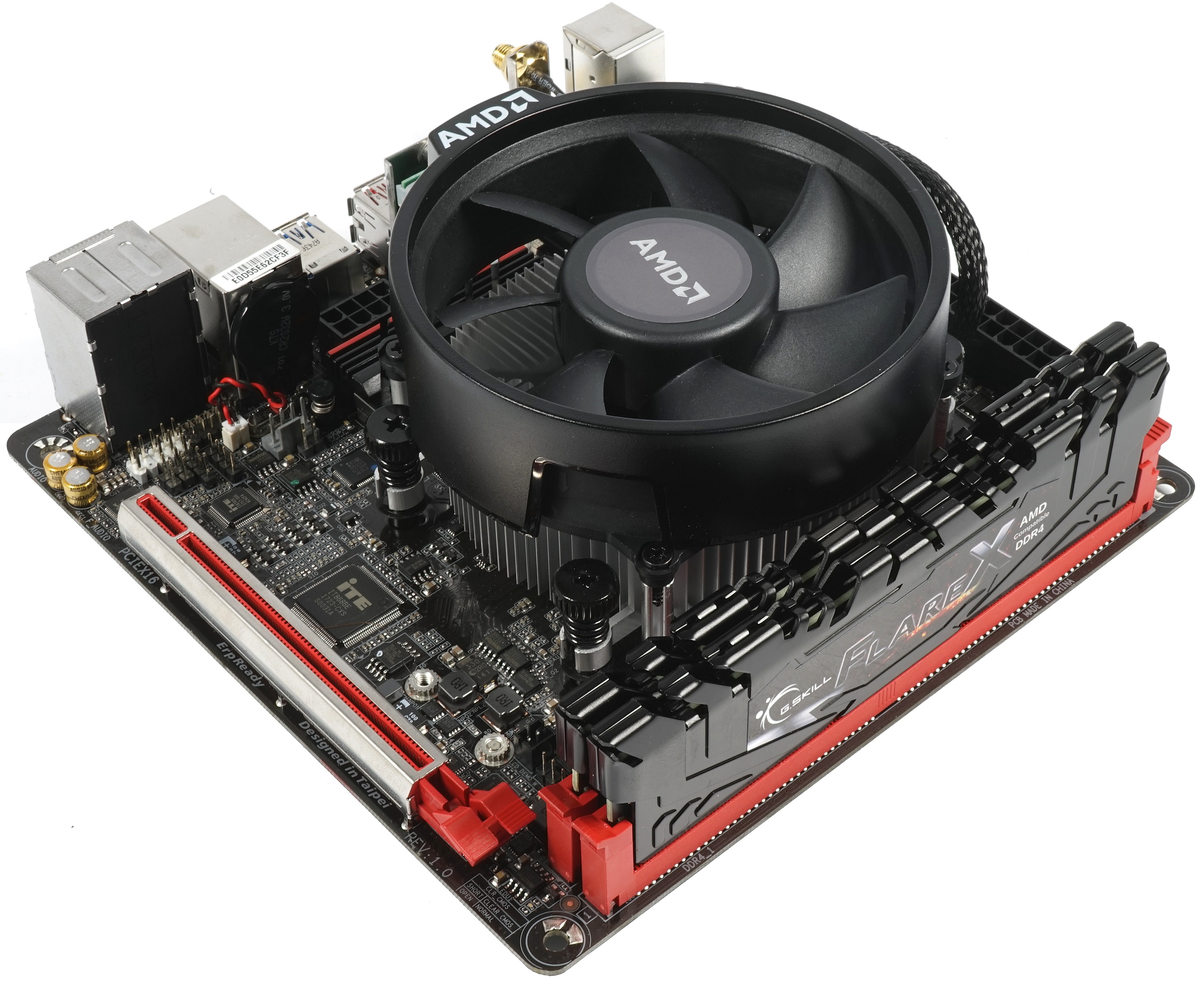We take a look at AMD's two new APUs in detail and analyze power consumption, clock, temperatures, and the interactions of all these values. And of course we also test the Boxed cooler against the Chiller and find a kind of "power limitation" on the Ryzen 5 2400G, which is not temperature dependent.
So much for the introduction of this follow-up, because yesterday's launch article "Ryzen and Vega united: AMD's Ryzen 5 2400G and Ryzen 3 2200G in test" about the two CPUs had already dealt extensively with gaming and application performance as well as the technical Details about Ryzen and Vega refreshed a bit. So we can safely omit this part and dedicate ourselves to the missing puzzle pieces to round off the overall picture.
Of course, it is also interesting that AMD uses thermal paste instead of a soft solder in both APUs. With a power dissipation of less than 100 watts on average, however, you will probably be able to live with it. At least we hope so. However, today's test will have to give us the final answer.

As in the launch article, we rely on the two AMD Ryzen 5 2400G and Ryzen 3 2200G, a gigabyte AB350N GAMING WIFI with 2x 8GB G.Skill FlareX DDR4 3200 and cool the APUs as usual with the Boxed cooler, which AMD calls Wraith stealth cooler. As always, the good piece comes from AVC's large OEM shelf and is labeled on AMD. The fastening with the four screws is perfectly solved and also significantly more comfortable, as well as safer than Intel's fumble push-pin solution.

In order to be able to work out the limits better, the maximum solution is also used in parallel with the air cooler when it comes to loading these APUs to the maximum possible level. Instead of the AMD Boxed cooler, we now rely on an Alphacool ice block XPX and for cooling the liquid on a compressor cooler in the form of the Alphacool Ice Age 2000 Chiller. In addition, we cool the motherboard components such as the voltage converters with a tight breeze of our wind machine, which presses the room air with its 22°C almost against the board and its superstructures.
So more is hardly possible and yet at then only 50°C in certain situations we will still run into certain limits, which we would like to tease at this point. No, the big sensation is of course also absent in this respect, because AMD knows what you are doing (and better not). But we are sure that some users will wonder why certain things are sometimes as they are – unexpectedly and slightly different than intended. That's where we start, so please be patient.

Interested parties can quickly get a quick overview of the summary in table form before we start:
| Test systems and measuring rooms | |
|---|---|
| Hardware: |
AMD Ryzen 5 2400G, Ryzen 3 2200G Gigabyte AB350N GAMING WIFI 2x 8GB G.Skill FlareX DDR4 3200 1x 1050 GB Crucial MX300 Be Quiet Dark Power Pro 11, 850-watt power supply |
| Cooling: |
AMD Boxed Cooler
Alphacool Ice Block XPX |
| Housing: |
Microcool Banchetto 101 |
| Monitor: | Eizo EV3237-BK |
| Power consumption: |
Mainboard Sensors, HWiNFO64, Aida64, Custom Software (I. Wallossek)
non-contact DC measurement on the 8-pin EPS connector |
| Thermography: |
Optris PI640, infrared camera PI Connect evaluation software with profiles |
| Operating system | Windows 10 Pro (1709, all updates) |

































Kommentieren